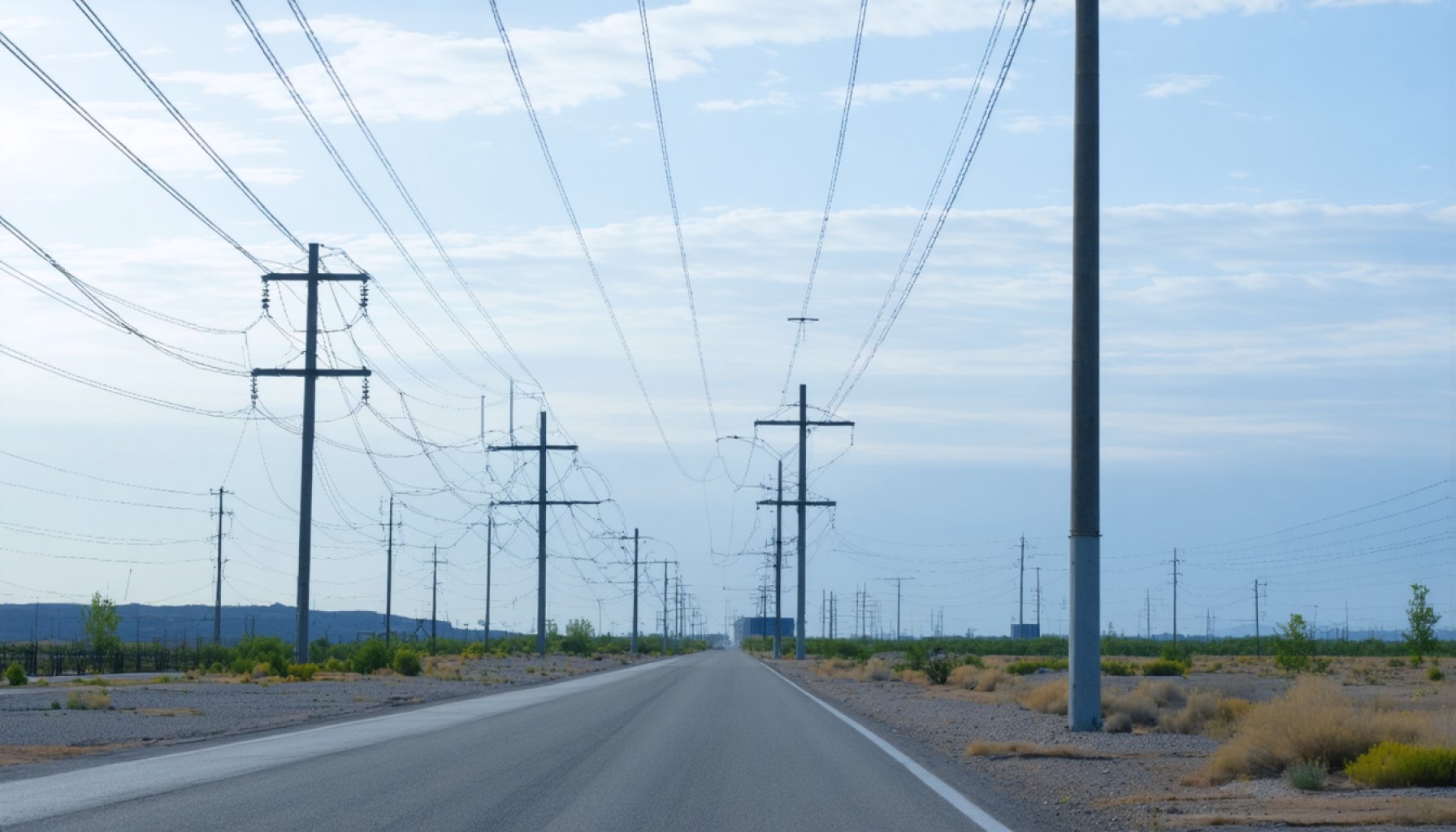- Ten new electric vehicle battery factories are under construction, set to boost U.S. battery production by 90% by 2025.
- Major players like Panasonic, Samsung, SK On, Ford, Honda, and Toyota are leading these projects, generating jobs and revitalizing communities like Jeffersonville, Ohio.
- Political and regulatory uncertainties, such as potential changes to electric vehicle incentives, threaten these ventures’ stability.
- Startup challenges such as financial and regulatory hurdles are evident, with companies like Kore Power and Freyr experiencing delays.
- The success of these factories is crucial for the U.S. to compete in the global clean energy and advanced manufacturing markets.
- Strategic leadership and favorable policies are necessary to maintain momentum in America’s transition to an electric future.
Glimmering under construction and buzzing with potential, ten sprawling electric vehicle battery factories are poised to reshape America’s transportation landscape. Hospitality from tech giants and automotive titans alike, these factories promise more than just significant capacity—their outputs could surge the United States’ battery production by a staggering 90% by 2025.
Visualize an industrious tapestry woven by the world’s leading battery players: Panasonic, Samsung, and SK On, alongside automakers like Ford, Honda, Hyundai, Stellantis, and Toyota. Each plant promises not just energy but also jobs and prosperity, transforming otherwise quiet midwestern towns like Jeffersonville, Ohio, into bustling hubs of 21st-century innovation.
Yet, like dark clouds gripping a sunny day, uncertainty looms. The future of these ventures hinges on complex political maneuvers. Shifts in federal strategies—such as rolling back electric vehicle incentives—pose threats capable of disrupting this nascent industry.
Some startups, like Kore Power and Freyr, have already felt the tremors, with standout projects stalling under the weight of financial quandaries and regulatory complexities. These individual stories hint at broader challenges but don’t overshadow the broader industrial momentum fueled largely by previous administrative policies.
The implications of these developments ripple beyond simple economics or local job markets. The success of these mega-projects may define whether the United States can solidify a place in the global arena of clean energy and advanced manufacturing that will dictate economic advantages in the ensuing decades.
As fresh waves of change surge, America stands on the cusp of an electric revolution. A balance of robust leadership, favorable policies, and strategic foresight will be crucial in ensuring that this charge doesn’t sputter prematurely, leaving the door ajar for global competitors.
The Electrifying Growth: Will Battery Mega-Factories Supercharge America’s Future?
How-To Steps & Life Hacks: Navigating the Electric Vehicle Battery Industry
1. Staying Informed: Follow key players like Panasonic, Samsung, and automakers such as Ford and Toyota to understand emerging technologies and strategies.
2. Investment Insight: Consider investing in companies leading in battery technology and infrastructure, as this sector looks to expand significantly by 2025.
3. Policy and Incentives: Keep track of federal incentives and policy shifts that could affect the development of the EV battery sector.
4. Skill Development: With job opportunities booming, developing skills in advanced manufacturing or battery technology can position you for roles in this growing field.
Real-World Use Cases
– Local Economic Uplift: Major factories located in midwestern towns like Jeffersonville, Ohio, aim to revitalize local economies with job creation and infrastructure improvements.
– Sustainable Transportation: Increased battery production will support the growth of electric vehicles, contributing to reduced carbon emissions and promoting cleaner urban environments.
Market Forecasts & Industry Trends
– Projected Growth: The U.S. battery production capacity is expected to surge by 90% by 2025. This growth supports burgeoning electric vehicle markets and augments clean energy efforts.
– European and Asian Competition: These regions are also investing heavily in battery technology, posing competitive challenges to the U.S. in the global market.
Reviews & Comparisons
– Established vs. Emerging Players: While giants like Panasonic dominate the current landscape, startups like Kore Power bring fresh perspectives and innovations, despite facing financial challenges.
Controversies & Limitations
– Political Challenges: The future of these factories hinges on consistent federal policies and incentives. Uncertain political landscapes could cause disruptions.
– Startup Struggles: Financial and regulatory challenges can hinder newer players, as seen with companies like Freyr facing project delays.
Features, Specs & Pricing
– Diverse Strategies: Companies are employing various technology strategies, from solid-state batteries to lithium-ion, each with different cost structures and efficiencies.
Security & Sustainability
– Environmental Impact: A focus on sustainability from sourcing materials to recycling batteries is crucial, especially as environmental concerns rise.
Insights & Predictions
– Employment Surge: These factories will generate thousands of jobs, requiring a skilled workforce and potentially inspiring educational investments in relevant fields.
Tutorials & Compatibility
– Understanding Technology: For enthusiasts and professionals, online courses and certifications on battery technology and its applications are increasingly available.
Pros & Cons Overview
Pros:
– Economic Growth: Job creation and local economic revitalization.
– Environmental Benefits: Reduced emissions from ICE vehicles.
– Technological Advancements: Driving innovation in battery tech.
Cons:
– Market Volatility: Dependence on federal incentives and market shifts.
– Startup Risks: Financial pressures can stifle innovation.
Actionable Recommendations & Quick Tips
– Monitor Market Trends: Stay updated on industry news through credible sources like Bloomberg or industry reports.
– Leverage Tax Credits: Investigate potential tax credits for electric vehicle purchases.
– Prepare for Change: If living in regions like the Midwest, anticipate economic changes and explore upskilling opportunities.
– Invest Wisely: Assess opportunities in EV and battery sectors for potential investments.
For further information, consider credible resources such as Bloomberg or Forbes. By remaining informed and adaptable, you can ride the wave of this electric revolution effectively.














